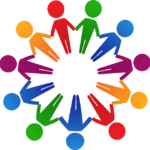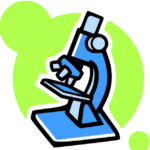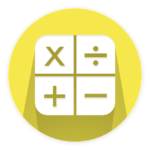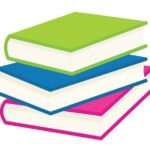Grade Two Student Curriculum Expectations
English Language Arts
Second-graders build on their previous literacy experiences to deepen their understanding of the complex reading system. They read more challenging texts which demand more decision-making and more sophisticated strategies. Second-graders learn to recognize when their reading breaks down and choose an appropriate fix-up strategy to create meaning as they are introduced to more complex texts throughout their day. They become effective problem solvers to be sure they understand what they are reading – the ultimate goal of the reading process. Students continue to read, write, and discuss fiction and nonfiction texts daily to learn how different sources help readers construct meaning about the world. Academic conversations help students apply foundational listening and speaking skills to learn how to understand, speak, and use words to communicate and actively engage within and beyond the classroom. Additionally, students’ writing stamina grows and their voices emerge when writing about what they are learning and their personal experiences. The ultimate goal of a balanced language arts curriculum is to build skills, independence, and passion to become lifelong readers, writers, and speakers.
Throughout the year, teachers use a variety of formal and informal assessments to examine students’ strengths and areas of focus to inform instruction to ensure all students progress toward grade-level expectations.
Second-graders continue to learn and apply social and emotional skills in a variety of ways to become self-aware and to nurture positive and respectful relationships with their teachers and peers. Creating a safe and inclusive community is foundational to a great year of learning for all.
Highlights of Second-Grade Language Arts
- Reading a variety of grade-level texts with appropriate speed, accuracy, expression, and understanding.
- Paying close attention to details in stories and books to answer questions about who, what, where, when, and why.
- Using text features such as captions, bold print, and indexes to locate key facts or information efficiently.
- Building a foundation of knowledge through reading and listening to books in social studies, science, and other subjects.
- Writing an opinion about a book using important details from the materials to support that opinion.
- Writing stories with a logical sequence of events that incorporates the elements of a story (e.g., characters, setting, plot, conflict, and resolution).
- Expanding and rearranging sentences.
- Determining the meaning of new words through word study.
- Participating in class conversations to understand others, build vocabulary, and communicate thoughts and needs.
Visit Michigan K-12 English Language Arts Standards for a complete view of the second-grade standards your child will be working toward in English language arts.
 Ideas for Supporting Your Reader/Writer
Ideas for Supporting Your Reader/Writer
- Set aside a special time every day to read to your child.
- Place books in different places around your home and change them monthly.
- Establish a family reading time.
- Go online to your local library website to view a calendar of fun events (often at no cost for participation).
- Apply for a library card at Bayliss Public Library so all family members can check out books on subjects that interest them.
- Show interest in your child’s reading by asking your child about the books he/she is reading.
- Start a family vocabulary box or jar. Have everyone write down new words they discover, add them to the box, and use the words in conversation.
- Talk about the events of the school day.
- Keep your favorite books in the car.
- Encourage your child to write a thank you note or letter to a family member or friend.
- Start a family journal to capture the daily events in writing or drawings.
- Go to a play or musical with your child. Discuss the way the actors bring the words to life.

Social Studies
My Community
The second-grade curriculum focuses on the history, geography, government, and economy of neighborhoods and nearby communities. Students learn about people and events from the past that have shaped the communities in which they live. Through an exploration of Sault Ste. Marie—they begin to learn about communities; they learn how goods and services move in and out of the local area, and what communities need to grow and prosper. They are introduced to local government and laws, examining local issues that affect themselves and their families. They practice making decisions aimed at improving the quality of school and community life.
Visit the Michigan Social Studies Academic Standards for a complete view of the grade standards your child will be working toward in social studies. This curriculum is also aligned with the College, Career & Civic Life Framework for Social Studies State Standards.
 Ideas for Supporting Your Social Scientist
Ideas for Supporting Your Social Scientist
- Read books about interesting places, people, and events in history.
- Discover Michigan together. Bring history alive by visiting historic homes, sites, and local museums.
- Discuss your family stories and history. Encourage your child to ask relatives questions about their lives. Put the information together in an album or brainstorm different ways to tell family tales, such as poems or short stories.

Science
Second-graders are curious about the world and how it works. Throughout the year, students engage in science learning experiences to connect their thinking, make observations, formulate new ideas, and make sense of the natural world and how it works. Second-graders learn to apply Science and Engineering Practices to think like scientists.
Highlights of Second-Grade Science
Second-grade students will analyze and classify different materials to develop an understanding of observable properties. They will explore how wind and water can change the shape of the land by comparing design solutions to slow or prevent such change. Second-graders will use information and models to identify and represent the shapes and kinds of land and bodies of water in an area and where water is found on Earth. They will also develop an understanding of what plants need to grow and how plants depend on animals for seed dispersal and pollination.
Sault Area Public Schools focuses on learning of the Michigan Science Standards. Click on the link to view the second-grade standards your child will be working toward in science.
 Ideas for Supporting Your Scientist
Ideas for Supporting Your Scientist
- Talk with your child to listen and learn what they are curious about.
- Science in the kitchen: Follow recipes and observe what happens as ingredients are added.
- Science in the backyard or park: Notice what your senses observe. Discuss the types of birds, animals, and insects that you observe.

Mathematics
Second-graders build on their previous math experiences to develop their mathematical skills while applying the practices mathematicians use. They…
- Make sense of problems and persevere in solving them.
- Reason abstractly and quantitatively.
- Construct viable arguments and critique the reasoning of others.
- Model with mathematics.
- Use appropriate tools strategically.
- Attend to precision.
- Look for and make use of structure.
- Look for and express regularity in repeated reasoning.
Second-grade mathematicians are encouraged to be creative problem solvers and flexible thinkers. They work through challenging problems in small groups and on their own, developing independence and persistence. They develop their fluency skills by playing with numbers, which allows them to think flexibly with methods and strategies to solve problems efficiently and accurately.
Highlights of Second-Grade Mathematics
Operations and Algebraic Thinking
- Represent and solve problems involving addition and subtraction.
- Add and subtract within 20.
- Work with equal groups of objects to gain foundations for multiplication.
Number and Operations in Base 10
- Understand place value (i.e., thousands, hundreds, tens, ones).
- Use place value understanding and properties of operations to add and subtract (within 1,000).
Measurement and Data
- Measure and estimate lengths in standard units (i.e., inches feet, centimeters, meters using rulers, yardsticks, meter sticks, and measuring tapes).
- Relate addition and subtraction to length.
- Work with time and money (i.e., digital and analog clocks to nearest five minutes; dollar bills, quarters, dimes, nickels, and pennies).
- Represent and interpret data (i.e., bar graph and picture graph).
Geometry
- Reason with shapes and their attributes (i.e., triangles, quadrilaterals, pentagons, hexagons, and cubes; partition rectangles and circles).
Visit the Michigan Mathematics Academic Standards for a complete view of the second-grade standards your child will be working toward in math.
 Ideas for Supporting Your Mathematician
Ideas for Supporting Your Mathematician
- Play games and solve puzzles while talking about your thinking and asking your child to explain his or her thinking.
- Create and solve addition and subtraction stories using facts.
- Measure items at home with rulers, tape measures, or meter sticks.
- Visit the Standards for Mathematical Practice for Parents.


